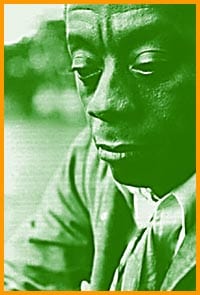Tennessee Williams penned the first queer memoir I ever read. Jammed with sly confessions and juicy anecdotes describing other famous people in theatre and film, “Memoirs” was unlike anything I’d ever encountered.
Williams’s adventures (both in and out of the bedroom) were enviable, his candour somewhat shocking. I was hooked. My nosy passion soon extended to published letters, diaries and biographies. I often studied the life story of an individual before exploring their fiction, music or films.
Much of my self-actualization as a young gay person came of devouring the recounted lives of other queers. Of all these voyeuristic forms I trusted biographies least, even those that offered the reassuring proviso “authorized.” I naïvely assumed that a first-person account was the more reliable version of events. Now I know better. Memoirs are just as subject to omissions and “creative remembering” as any third-party assessment – if not more so.
And yet it’s this high subjectivity that compels me to keep reading memoirs. The form and its variations fascinate me, as does the sheer audacity of the act. The memoirist is, after all, someone who has the guts to say, “My life matters – listen!” The ethical dilemmas raised by this type of public disclosure are endless. How can a person describe his life without dragging other real people into the tale? The easy answer to this question is: he can’t. Small wonder that contemporary memoirs are often examined by lawyers well before they reach the reading public.
Who draws the line between the rights of the memoirist versus the rights of those with whom she slept, lived or worked? It’s tricky terrain indeed, making memoirs only slightly less controversial than and tabloid gossip. But even if we deride someone for telling too much, we’re secretly thrilled that they spilled every bean. Memoirs offer us the deep pleasure of vicarious living – without having to suffer the consequences.
The memoir or “autobiography” is to my mind the perfect metaphor for the coming out process itself. No one understands the impact of self-revelation more keenly than gay men and lesbians. The acts of confession and of conscious omission are major themes in our lives, which might explain why we’re such ardent consumers of this particular literary form. A quick survey of the shelves at any queer bookstore worth its salt proves my point: we love memoirs.
It may be hard for those of us living in the age of Too Much Information to comprehend the risks taken when unveiling one’s “true” self in print at earlier stages in history. Today we’re bombarded with published confessionals from celebrities of all stripes (and their dubious associates) who seem to feel that no detail is too sacred to reveal. That which was once considered too risky is now de rigeur if one wishes to publish a best-selling account of his or her adventures.
And although we may claim to be growing numb to kiss-and-tell tomes and the endless excavations of unhappy childhood, we certainly haven’t stopped buying them. It’s difficult to believe there was ever a time when gay men and lesbians would’ve been denied (or denied themselves) the chance to describe their lives without shame, but that time isn’t as far in the past as we might like to believe.
Where the lives of our most exciting forebears are concerned, we owe a debt of gratitude to biographers and social historians. They’ve pursued our pink past with the tenacity of detectives, decoding the fragments and silences. The true crime of the historical censorship of homos is the glaring shortage of first-person accounts of gay and lesbian life. Read many memoirs by gay First World War soldiers? Seen any autobiographies of out lesbian nurses who worked in Vietnam? Even the pulpy confessional offerings of “Anonymous” were tainted with shame and an obligatory curtsey to medical manuals. Deviant wasn’t always a term of self-congratulation.
Luckily for us, some brave gay and lesbian writers gave us the truth of their lives in the form of autobiographical fiction well before it was “safe” to do so. Many of them risked possible career suicide in an effort to tell their personal stories.
Oscar Wilde’s De Profundis is a kind of memoir, as is Colette’s pansexual novel The Pure And The Impure. The true power of James Baldwin’s fiction comes from his Harlem childhood and adult life as a gay citizen of Greenwich Village.
Not everyone feels comfortable trotting out his or her life story in non-fictional form. Fiction writers can still fall back on the curt response, “It’s fiction,” if questioned too closely about the sometimes-obvious autobiographical content of a novel. The authors of memoirs have no such luxury, having promised the reader to tell the truth – or at least their personal version of it.
Today there are as many kinds of memoir as there are types of fiction. There’s the autobiography that looks back from the vantage point of advanced age (May Sarton’s At Eighty-two: A Journal), the recollection that examines one aspect of a life (Sky Gilbert’s Ejaculations From The Charm Factory details his experiences as artistic director of Buddies In Bad Times Theatre), the relationship memoir (actor Simon Callow’s Love Is Where It Falls describes his romantic friendship with theatre agent Peggy Ramsay).
One needn’t be on death’s door in order to publish a memoir – the age of memoirists is rapidly decreasing. We’ve had memoirs and autobiographies from Greg Louganis, Melissa Etheridge, Carole Pope and Boy George, none of them even close to being octogenarians.
Whether a memoir is trashy or literary hardly matters. It’s the process of recording ourselves without apology that interests gay and lesbian readers. Without these first-person accounts and fictional retellings, we might begin to believe the myth that at one time, we didn’t even exist.
***
Former Xtra columnist Marnie Woodrow is teaching an eight-week course celebrating gay and lesbian memoirs this fall and winter at The University Of Toronto School Of Continuing Studies. Her first novel, to be published by Knopf Canada, is due out next year.

 Why you can trust Xtra
Why you can trust Xtra


